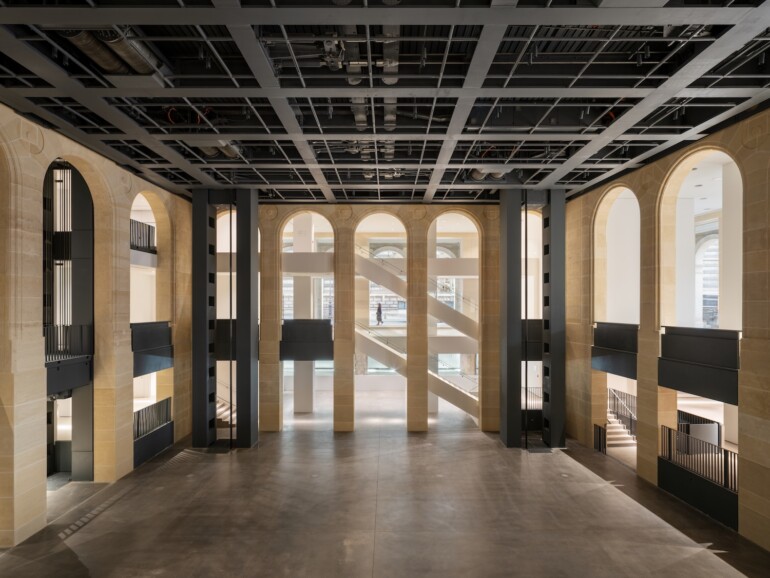The Fondation Cartier pour l’art contemporain is moving from Boulevard Raspail in southern Paris to the historic heart of the city, just a few steps from the Louvre. Under the direction of Director Chris Dercon, French star architect Jean Nouvel has completely redesigned the Haussmann building on Place du Palais-Royal. The renowned art foundation for contemporary art is thus moving into a new home that Nouvel has transformed into an architectural hybrid of history and high-tech—a new cultural landmark for contemporary art in Paris.
The building at Place du Palais-Royal 2, built in 1855, between the Louvre and the Palais Royal, has been transformed into a high-tech art venue in a historic setting. Nouvel’s concept: a dynamic architecture of five height-adjustable platforms that can be set to eleven different height positions, allowing for various combinations of volume, light, and verticality. In total, the new museum offers 8,500 square meters of publicly accessible space, including 6,500 square meters of exhibition space—five times more than before. The renovation costs are estimated at over 200 million euros.
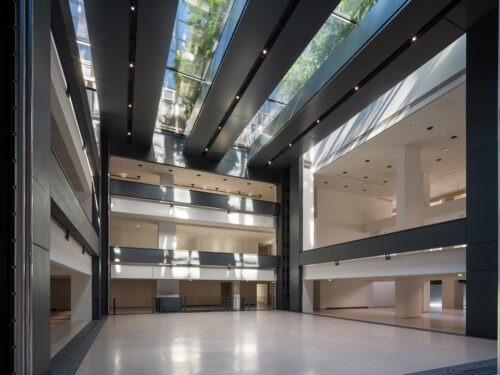
With this technical and spatial flexibility, the Fondation Cartier aims to set new standards for contemporary art exhibitions in the future. Director Dercon sees the variable architecture as a scenographic instrument that can be used to serve a wide range of disciplines—from visual arts, photography, and cinema to crafts and performance, as well as dance, music, and science.
Opening Exhibition “Exposition Générale”
To inaugurate its new home, the Fondation Cartier presents the exhibition »Exposition Générale«, curated by Chris Dercon. The show embraces the building’s eventful history—once a hotel, an antique auction house, and a department store—and connects it with the present of contemporary art. Approximately 600 works by 300 artists from the Fondation Cartier collection fill the new spaces, illustrating the diversity and openness of the program that has shaped the dialogue between art, science, and society since 1984.
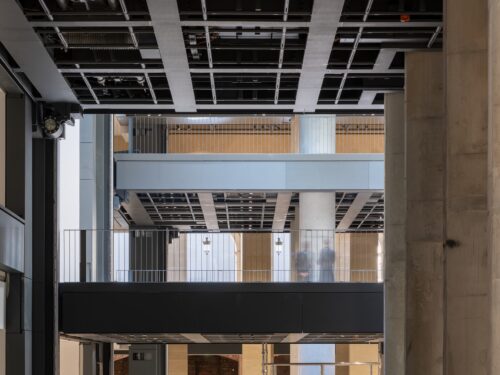
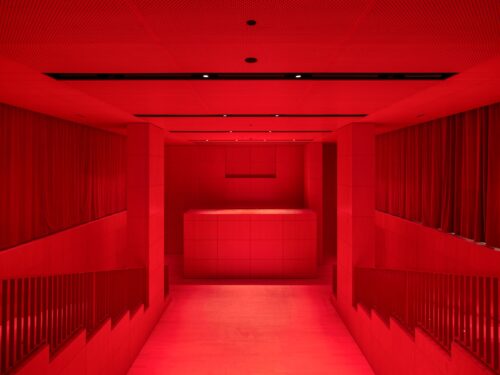
Particularly impressive is the range of artistic positions that the Fondation Cartier has presented to date: Brazilian painter Beatriz Milhazes plays with the contrasts between rigor and abundance, while Japanese photographer Rinko Kawauchi, in a poetic video work, merges light, movement, and silence into a quiet meditation on time and perception, as well as French artist Annette Messager, who combines textile fragments, objects, and writing into a multifaceted installation where the personal transcends into the public.
A Place for Dialogue and the Present
The Fondation Cartier, founded in 1984 by Alain Dominique Perrin, then president of Maison Cartier, was France’s first private art foundation. Its goal: to create a platform for dialogue and artistic expression that transcends the boundaries between art forms and promotes interdisciplinary exchange. With international programs, exhibitions, performances, and discourse formats, the foundation aims to make contemporary art accessible to a broad audience and to open spaces for intercultural dialogue.
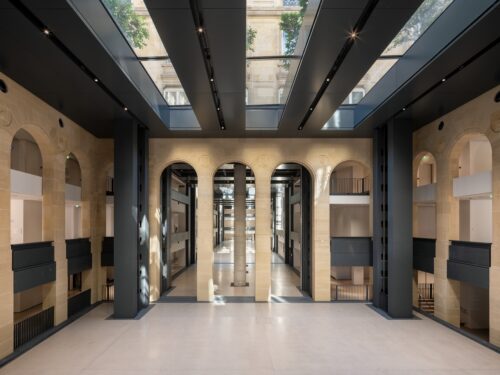
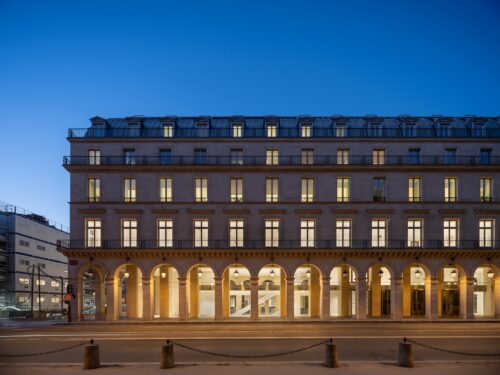
With its move to the immediate city center of Paris, the Fondation Cartier opens a new chapter—as both an architectural and institutional directive. Directly opposite the Louvre, a place is thus created that not only showcases art but also becomes a space for contemporary creativity itself. [Ed.]

